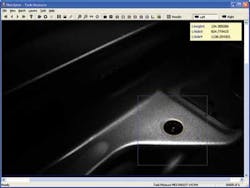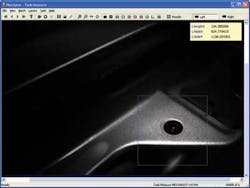Researchers monitor nanofiber spinning with CCD camera and zoom optics
Led by fiber materials expert Frank Ko, PhD, the Advanced Fibrous Materials Laboratory (AFML), a research laboratory at the University of British Columbia (UBC; Vancouver, BC, Canada) in the department of Materials Engineering, conducts research in the areas of structural, functional, and biomedical electrospun fibers.
With its nanofiber R&D focus on the medical field, the AFM team is working to enable advances in artificial organ components, surgical implants, vascular stents, drug delivery, wound dressings, medical textile materials, and tissue engineering scaffolds in orthopedic, vascular, and neural prostheses. The nanofiber in development is based on polymer solutions that use organic and inorganic nanoparticles. Properties such as the high surface-to-volume ratio and a relatively defect-free structure on the molecular level are what support the mechanical strength and chemical suitability of nanofibers in these composite material applications.1

